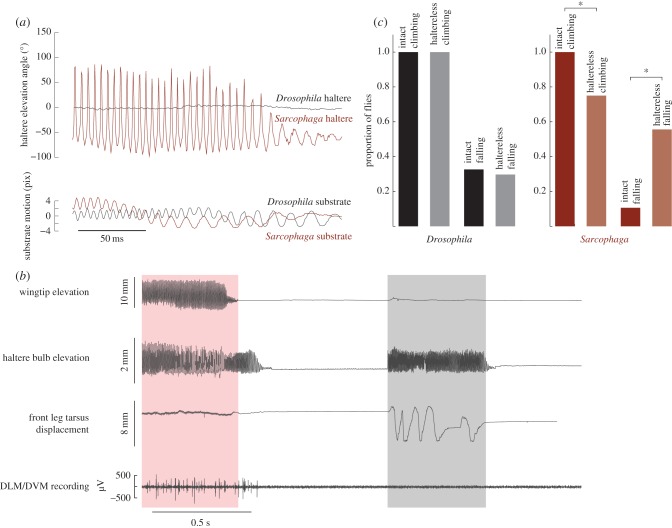Figure 2.
Haltere movements while walking and standing on unstable surfaces are similar, and they do not require direct flight muscle activity. (a) Haltere movements during perturbations. Top: Sarcophaga shows large haltere oscillations during perturbations; Drosophila does not. Bottom: movement of the substrate. (b) Behaviour and dorsal longitudinal muscle/dorsal–ventral muscle (DLM/DVM) activity in a Sarcophaga fly during flying (red-shaded box, first) and walking (grey-shaded box, second). Top trace: the wing is oscillated during flight and stationary during walking. Second trace: the haltere moves during both walking and flying, with similar amplitude in each. Third trace: the front leg makes large movements only during walking. Bottom trace: DLM/DVM are only active during flight. (c) Halteres influence the proportion of flies climbing a vertical wall and falling from the wall after a perturbation, but only in species that oscillate their halteres while walking. Left: Drosophila does not oscillate its halteres while walking, and haltere ablation has no effect on the proportion of flies climbing or falling. Right: Sarcophaga oscillates its halteres during walking. Haltere ablation decreases the proportion of flies climbing and increases the proportion falling. (Online version in colour.)

